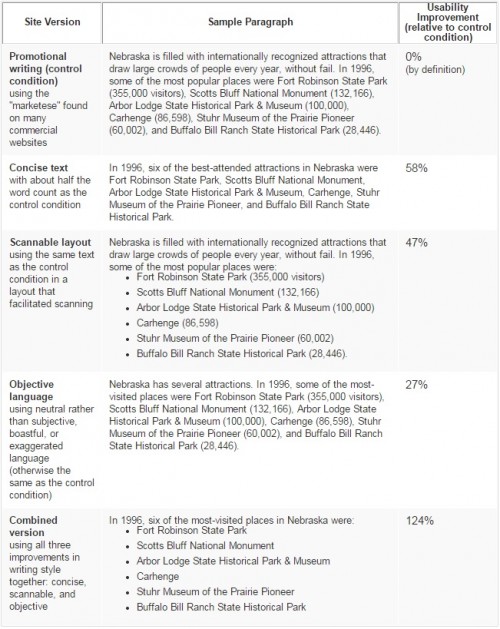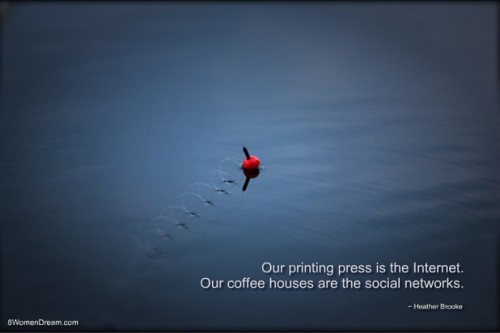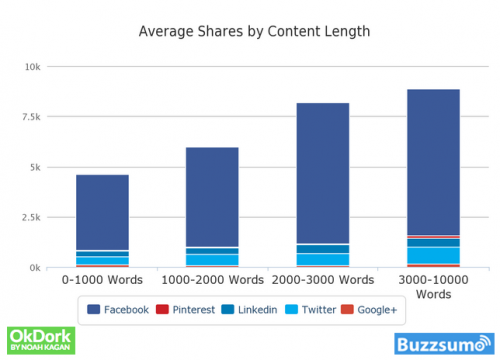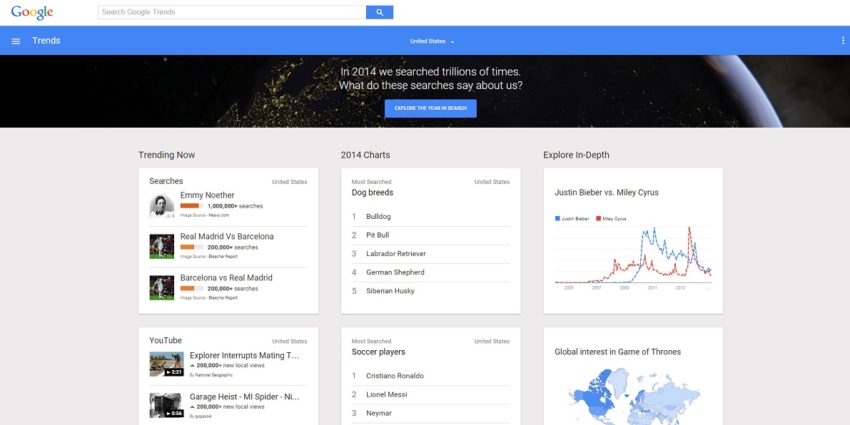Viral content is so tempting for creatives who are sharing their dreams online.
The idea that 100 thousand people–or more–could suddenly rain down upon what you have provided can be a dream all its own.
Except that viral content can be a problem.
I associate viral content with snake charming. Handled right and you will mesmerize an audience, handled wrong and it will take you out with one big bite.
Having something go viral doesn’t always mean anyone will even know (or care) who you are, even though something of yours has gone “viral” on the Internet.
And not all popular attention is positive.
Viral creations can attract all kinds of problems that you might not anticipate. It’s hard for creatives sharing their stuff online to understand the different types of content, when you should use them, and how viral content works with fame and sponsors rushing in to make dreams come true.
Take 8 Women Dream for example.
The idea behind 8 Women Dream is that each dreamer writes content once a week that over time builds a backlog of dream stories, or what is known on the Internet as long-tail pages on this site and it’s through this backlog/long-tail content that most of the traffic and much of the discovery happens for 8 Women Dream. This is how the Internet works.
Long-tail content is one of the reasons Google search rates a site’s age as a part of its algorithm. The number of years a site is online combined with the number of growing pages with GOOD content determines how much Google sends traffic your way–if the content is truly good and follows the standards of the Internet –then Google can make you very, very successful.

Um. Yes. There are Internet standards.
It’s the backlog of long-tail content that will bring viewers from all over the world (and some Webby judges once a year) to a site and help grow a site’s exposure over time. It has always been my belief that if you build your dream story online via this long-tail format (and create incredible, visually interesting content about your dream) then eventually the right person who can help you make your dream a reality will show up to view what you have created online and reach out to you.
If it’s good enough.
The past dreamers on 8WD who have shared their stories built the long-tail foundation to this site that the current dreamers stand upon and by the current dreamers continuing to add more valuable content to this foundation, opportunities increase for all of the dreamers to garner the attention of someone of influence in their field and gain a tribe who wants to help their dream come true.
This is why long-tail content is more valuable than viral content–BUT a piece of viral content can help a dream tip over into big success if it’s the right message at the right time–however it is an incredibly difficult accomplishment to pull off.
Building the kind of long-tail size needed to be found on the Internet is a monstrous task–it’s so much more than great content, social media sharing and publicity–it’s also building a big community with lots of interaction. When Huffington Post started their blog they added 50 emotionally charged bait stories a day to quickly build their site size and seize their place on the Internet.
The best way to make your dreams come true online is to get so big that you can’t be ignored then share something perfectly targeted to go viral once you’ve reached a certain size.
But whatever size you think is big enough to play in the big leagues of the Internet is already too small. Creating a following that loves you is not something that can be accomplished overnight or even in a year of dreaming on 8 Women Dream.
All too often, we let the instant-access of the Internet entice us into believing that anything we put online we think is good will give us instant Internet success. Success, no matter how you slice it up is still a time-spent game that requires you to put in the time–however long that might be–to change enough to garner the success.
This is where people think creating something viral will help them achieve the right attention for success.

But viral isn’t always a friendly beast.
Let’s say I am a watercolor painter who wants my work to be noticed. I want my paintings to be loved by the masses and be featured in a certain galleries I’ve had my eye on. I’ve built my website and I’ve used my blog to share my painting process. I get a lot of good, positive feedback on my work so I decide I want to create some viral content to get more attention and maybe land an agent.
My dog is pretty cute. He always gets all the attention wherever I take him and he has this cute trick he does with a bone. I decide to film him and create this cute little video that I upload to YouTube. Let’s say the video is stumbled upon and viewed by an influencer (an important part of the viral process) who loves it and shares it with his/her following.
Suddenly this video goes viral.
Except it’s not about my painting abilities–it’s about my dog. The video will attract a lot of pet owners and dog lovers, but it won’t attract the audience who will help make my painting dreams come true. And even if I place the dog video on my website, I’d be attracting the wrong tribe of people who come only to watch the video, but never interact anywhere else on my website–unless my paintings are all masterpieces of this dog… and I paint animals for a living like no one has ever seen before.
Let me ask you this: think of the last time you saw something go viral. How about the blue and black/gold and white dress controversy? Can you tell me the dress designer? The store it is sold at? The name of their website? The price? Who took the photo?
The virality of that striped dress could be very good for the designer, but not so much for the person who took the photo or the girl who put it in the window.
Viral content should be more like Justin Beiber’s success–however you think of him–like a kid who plays his stuff on YouTube for years until he gets discovered by an influencer. By the time he goes viral (in his niche!) he already has been performing online and he is ready for his music to go viral.
The viral situation works in his favor because his long-tail performing content was building for years on YouTube before his first viral video tipped him into the place where his dreams came true.
Viral for viral’s sake can eat a lot of bandwidth, cost you some serious website hosting money and it can even take your website down for your regular readers. It can bring trolls who write nasty comments, and strangers who like to send angry, threatening emails. Commenters and sharers can make fun of what you are doing and heckle you for doing it. Your family can be harassed offline or your kids teased at school. It can even cost you your job. Viral content can bring you the wrong kind of attention. You have to think it through.
Going viral isn’t always a good thing.
So when you think you are ready for something viral to launch your dream into the stratosphere, or bring attention to what you are working on, you need to think deeply about what your viral content should be and how it should be delivered. Cute dogs and cats may not work for your demographic.
Yes, they might be popular, but they may do absolutely nothing for your dream.
There are some key ingredients to successful viral content if you think that you are ready to give it a try and thanks to BuzzSumo, they’ve analyzed the most popular content of over 100 million articles and shared what they discovered. BuzzSumo is a company that specializes in providing insights into the most popular content online and the influencers who share it.
Here are BuzzSumo’s 10 ingredients to increase your chances of viral content:
1. Longer content gets more shares.
3,000-10,000 word articles receive the most shares (8859 total average shares) online. Research is important here. Long content has to be loaded with quality information. Even researchers for the NYTimes discovered the most emailed posts for The NY Times were their long articles over their shorter ones.
2. Compelling images increase engagement.
Twice as many people, on average, share articles with at least one image in the post, underscoring the importance of having visual elements mixed in with bodies of text. This is especially true on Facebook.
3. Twitter also likes images.
Stories with thumbnail images did substantially better on Twitter than those without.
4. Invoke emotions.
The most popular three emotions invoked were awe, laughter and amusement. Next came quizzes. It would seem that the world loves to be awed by quizzes that make them laugh in amusement. The most sharable content online has a positive or upbeat twist to them.
5. Lists and infographics are king.
List posts (like numbers and bullet items) and infographics receive more average shares than other content types.
6. 10 is the bewitching number.
BuzzSumo found that #10 item lists received the most social shares: on average 10,621 social shares. In fact, they had four times as many social shares than the second most popular list number: 23. The runner-ups were 23, 16, and 24.
7. Trust plays a major role in sharing.
This means you need a byline and an about page that tells who you really are. Long gone are the days of hiding on the Internet. If you want viral–it has to be the real you.
8. Influencers make the difference.
BuzzSumo found that having one influential person sharing your content resulted in 31.8% more social shares. Having three influential people sharing your content doubled the number of social shares. And having five influential people sharing your content almost quadrupled the total number of social shares. Become friend with influencers in your niche.
9. Re-promote old content on a regular basis.
Content always has an initial spark when it is first released out on to the Internet, then it dies off a timely death … unless the headline and meta data hook people into coming to see it over time. Updating and re-sharing old content that ties into an upcoming trend can cause it to go viral a good year (or longer) after it was originally published online.
10. The best day for social shares is Tuesday.
Content gets the most shares on Tuesday or Monday, depending on the social network: Facebook is Tuesday, Google Plus is Tuesday, Twitter is Tuesday, Linkedin is Monday, Pinterest is Monday, and YouTube on Monday or Tuesday.
You must also be willing to market your own dream content and not just on one platform like Facebook. You need to branch out into other forms of social media and find people who will like what you are doing. This could be Reddit or Buzzfeed or any number of smaller social communities, but you have to be willing to promote your own stuff over and over.
Constantly–not just once.
I see this all the time on 8 Women Dream: a dreamer will work her heart out on a piece of content and then share it on Facebook once and that’s it. No Twitter; no LinkedIn; no Pinterest; no re-sharing on Twitter several times during the week and when a trend might be launching. It just gets shared once… on one day … then they ask me: why aren’t more people reading this?
The Internet is a big place with loads of activity and to rise above the noise you have to share your creation over and over until it gets seen. Content should not be a one-hit wonder. Plus you need to be sharing other creative work you find on the Internet and comment on other creative’s blogs so that you are part of a larger community. Want a lot of comments? Comment on other blogs regularly. You can’t expect people to comment on your blog if you aren’t out there commenting on other blogs yourself.
You become part of a community first and give your attention to them before you ask them to come look at your lovely stuff. Most of them will probably start checking out your stuff before you ask. The Internet is a “Givers Gain®” environment. You must first give before you expect anything in return.
Creating viral content shouldn’t be a dream in and of itself.
Your dream should be perfecting your craft and getting better at it day after day, getting to know your tribe and what they would love to see from you, and building a website with lots of long-tail content before you think of producing something viral. The popular site, Elephant Journal averages 20 content posts a day (even on weekends) and the contributors share their own content across all social media platforms.
They believe in the long-tail before viral. Big before famous.
Now get back to work, dreamers. We’ve got more long-tails to attach to our dreams.
Catherine Hughes
Share your dream online.








